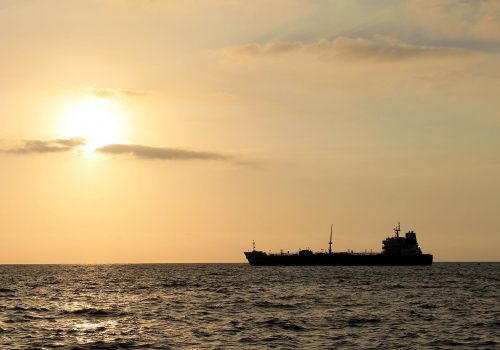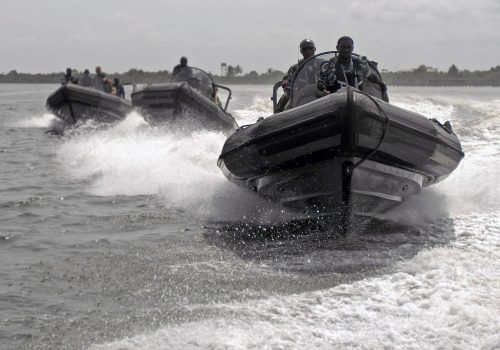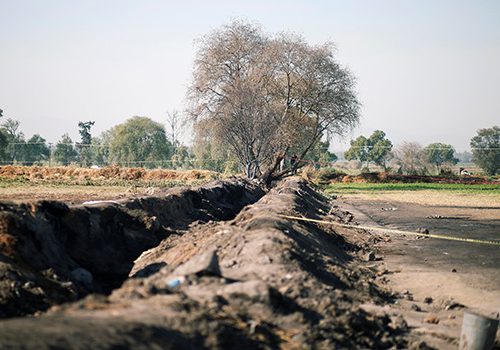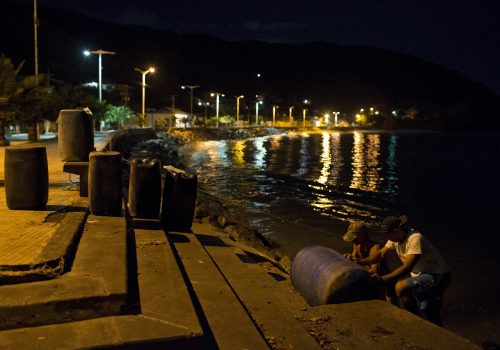March 28, 2019
Mapping the invisible supply chain
This post is the second in a series of three that will focus on 1) defining, 2) mapping, and 3) addressing the invisible supply chain. You can read the first post here.
In the autumn of 2017, Italian authorities busted a lucrative smuggling ring that was bringing hundreds of millions of liters of stolen Libyan fuel into the European Union. The criminal operation involved coordination between a host of players: Libyan militias, a Libyan crime boss, Maltese criminals, corrupt bureaucrats, Italian mafia groups, Italian fuel traders, and “white pump” (off-brand) retail suppliers willing to pay cut-rate wholesale prices without asking questions.
Low-grade diesel departing Libyan refineries would be trucked to waiting fishing boats fitted with large storage tanks; those boats would then ferry the illicit fuel out to small tankers that had “gone dark” by switching off their Automated Identification Systems (AIS) on approaching Libyan waters. At Hurd’s Bank, a free offshore anchorage at the edge of Maltese waters, some of the diesel would be transferred from those tankers to larger ones owned by Italian trading firms, accompanied by counterfeit certificates of origin that, in at least some cases, had been supplied by an official within the Libyan National Oil Corporation. The product would then be laundered into the European retail market. Only in May 2018 did it come to light that some of the stolen fuel had actually been stored and transferred in Malta’s ports in plain view of Maltese authorities, who reportedly did not perform any of the required inspections.
This is an illuminating example of an invisible supply chain, one in which a number of parties, some entirely criminal and others opportunistic, conspired to source, move, and sell illegally a commodity that is not intrinsically illegal. From refinery to retail, the system diverted legitimate product, moved it invisibly, either “in the dark” or in plain view, and laundered it back into the licit supply chain with the collusion of otherwise legitimate officials and merchants. Because of the nature of the product being moved and sold, and the extent to which the invisible supply chain overlaps with or mimics the legitimate supply chain, it can be extraordinarily difficult for authorities to uncover even a portion of the system, and even harder to map the entire chain.
Mapping an invisible supply chain begins with understanding how the legitimate supply chain functions. This is so, partly because there will be at least some resemblance between the legitimate and illicit systems, but also because in many cases the two supply chains will overlap or even temporarily merge. An investigator with a good grasp of the legitimate supply chain will be far better positioned to locate junctures where a commodity could be diverted, or where laundering could occur.
That investigator also has to be able to think like a criminal, with the understanding that criminality tends toward the path of least resistance and exploits gaps in oversight. It takes this sort of imagination to anticipate that, as in one smuggling operation in Uganda, the GPS tracking device for a tanker truck might be removed and given to a motorcyclist, who will then travel the tanker’s scheduled route while the tanker delivers the fuel at a completely different destination, or that smugglers in Algeria will send commodities across the closed border with Morocco using donkeys that can cross barely passable terrain without human supervision. The more examples investigators have seen of illicit as well as legitimate supply chains, the better equipped they are to recognize a criminal one.
Where an invisible supply chain so effectively mimics the legitimate supply chain that it betrays nothing suspicious, or where it merges with the legitimate supply chain, tracing criminal activity is especially difficult. In that light, successful mapping of an invisible supply chain is more likely begin at either end of the system rather than in the middle. Significantly, the investigation that exposed the Mediterranean fuel smuggling operation was triggered by the exposure of two points in the supply chain: a 2016 report by the UN Panel of Experts on Libya named key players at the Libyan source of the diesel, and Italian energy firm Eni filed a complaint about aberrations in fuel distribution facilities in Catania. Further red flags, including the ship-to-ship transfers between tankers at Hurd’s Bank and subpar fuel being sold to consumers, offered leads into how the fuel was being moved and to what specific ends. Eventually, a fork in the invisible supply chain, leading straight into Maltese ports and to criminal activity in broad daylight, was exposed through the efforts of Maltese journalists and the Investigative Reporting Project Italy (IRPI), who painstakingly collated information from the available sources and followed up with interviews.
Ultimately, Italian courts authorized investigators to use sophisticated surveillance technology—in this case, listening in on satellite phone calls—for Italian investigators to fill in some of the gaps, including how the criminal organizations involved conspired to launder the stolen diesel through Malta before delivery to Sicily. Together with other points of insight, this information allowed them to see this smuggling ring’s invisible supply chain from end to end. At that point, indictments were issued.
Technology can therefore be an effective tool in mapping invisible supply chains, though it cannot fill in the entire puzzle. Another crucial piece is that stakeholders seeking to mitigate these criminal enterprises must be at least as collaborative and creative as the criminals themselves. The same people who build invisible supply chains to trade illegally in hydrocarbons and other normally legitimate commodities often engage in other forms of trafficking as well. Furthermore, as the Mediterranean fuel smuggling operation reveals, such supply chains often involve collaboration among diverse actors across multiple borders. Unfortunately, area experts in commodities, narcotics, weapons, antiquities, and other forms of trafficking, as well as in the criminal organizations that profit from those schemes, seldom pool their resources in the same manner. Linking those specialists and other stakeholders through focused working groups and broader networks can aggregate their expertise and open up new possibilities for monitoring, investigation, and interdiction. This sort of connectivity broke open the case of the Mediterranean fuel smuggling ring: it took the combined efforts of an international body, an oil major, law enforcement personnel, and investigative reporters to trace one invisible supply chain. In too many such instances, however, the connections are formed incidentally or through one stakeholder’s ability to connect the dots, when what is needful is deliberate, ongoing collaboration.
The operators of an invisible supply chain unavoidably bank to some extent on observers being unwilling to look beyond a façade of legitimacy. But if even one small stretch of such a system is exposed, someone with a working knowledge of supply chains, a keen eye for red flags, the right resources and collaborators, and the resolve to patiently collect the rest of the puzzle pieces can shine a light on the full extent of a supply chain criminals have worked hard to keep concealed.
Dr. Ian Ralby is founder and CEO, Dr. David Soud is head of research and analysis, and Rohini Ralby is managing director at I.R. Consilium, LLC. Dr. Ian Ralby is also a senior fellow with the Atlantic Council Global Energy Center. You can follow Ian (@ImRalby) and I.R. Consilium (@IRConsilium) on Twitter.
Related content
Image: The Grand Harbour, also known as the Port of Valletta, in Malta (photo by Henry M. Trotter/Wikimedia Commons).




